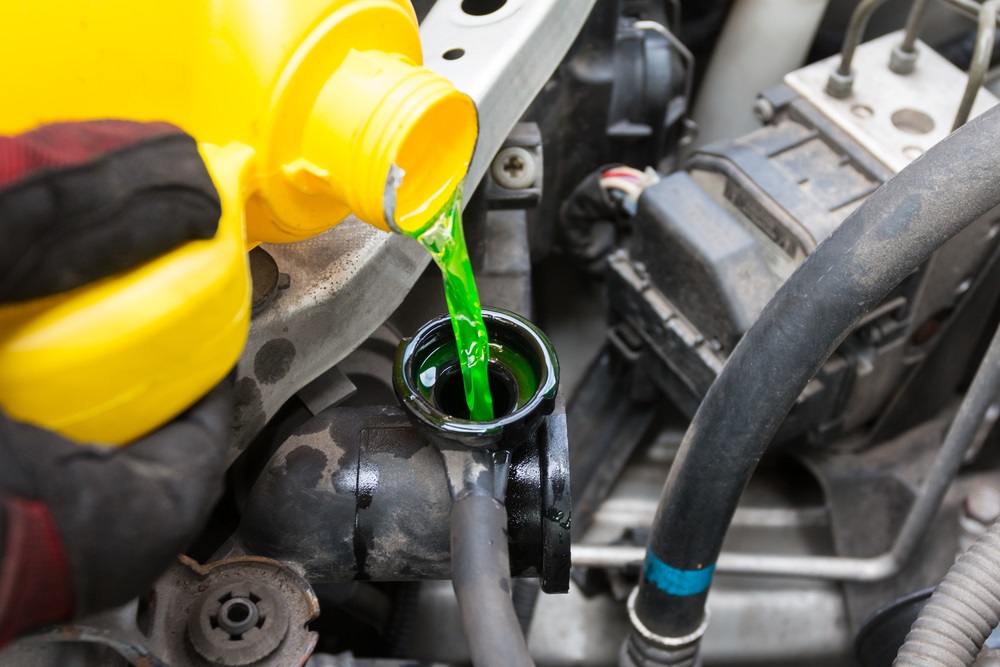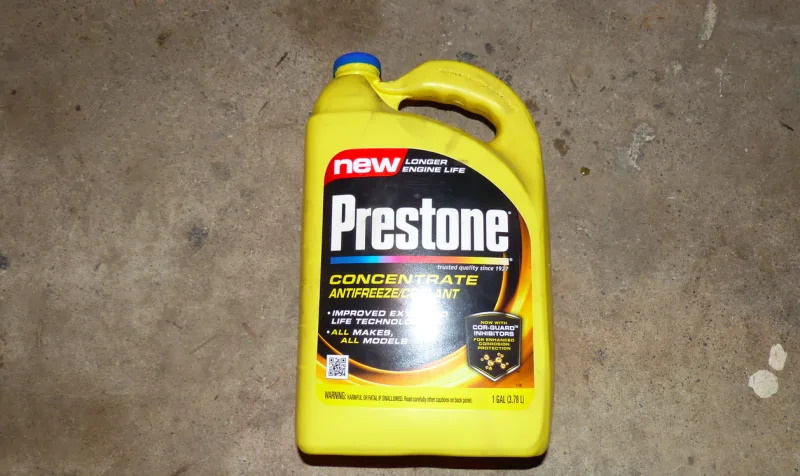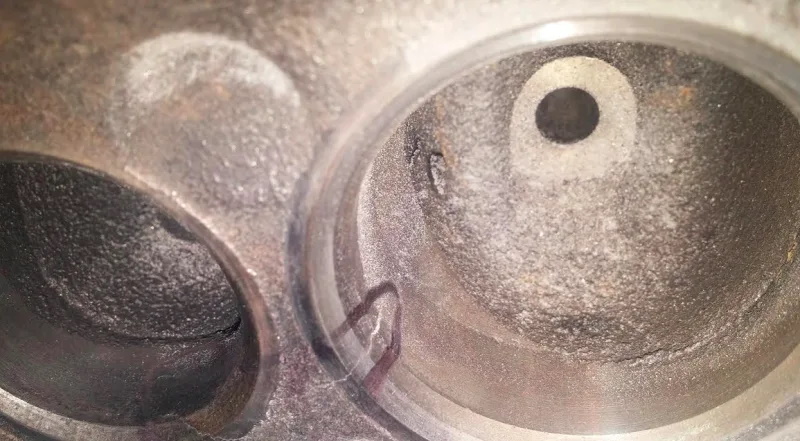It is important to act quickly at any sign of overheating, driving with the engine overheated can cause damage that requires costly repairs.
Here are the most common reasons why your car overheats, as well as some immediate solutions you can do at that time:
1. Traffic: When the engine overheats due to excessive traffic, it is most likely a consequence of the car being stopped most of the time, and not enough air circulates through the engine to cool it. To return the engine to normal temperature, it is recommended to turn off the air conditioning immediately and turn on the heater at maximum fan speed. Heating is part of the cooling system, and turning it on releases some of the heat from the engine, allowing the coolant temperature to drop slightly. In those vehicles where the fan is driven by a belt, it is possible to cool the engine by placing the car in neutral and accelerating, so that more air flows through the engine.
2. Loss of antifreeze or coolant: It may be that the hoses or radiator are cracked, or there is some obstruction due to dirt or lack of maintenance. If your car heats up for no apparent reason, it may also be that there is a lack of coolant for whatever reason. It is convenient from time to time to check the coolant level is appropriate. If not, it is possible that you have a leak in the system through which the liquid is gradually getting lost until you run out of it. That’s when it will overheat

3. Road heating: Most likely, there is a cooling system failure such as a clogged radiator, lack of coolant, or water pump failure. In any of the three cases it is recommended to immediately turn off the air conditioning, turn on the heating at full speed and stop the engine immediately. Once your car is parked, raise the hood, wait for the engine to cool for about 15 minutes, and look for coolant leaks, broken or disconnected hoses, or clogged radiator.
4. Thermostat: The thermostat plays a very important role in the system, as it controls the temperature of the engine. 98% of the thermostat failure is due to rust, causing it to stick and the coolant does not flow to the cooling zone.
5. Radiator fan: Its function is to let the external air pass through the radiator and dissipate its temperature, making the coolant lower its temperature and re-enter the engine. All cars have a fan that must be activated when the temperature of the engine exceeds approximately 95ºC. It is something very common in summer, so if this part does not work as it should, the excess temperatures will be a fact because the environment will not help the car to cool as it should. This is an easy fault to detect, because the fan can be heard quite clearly at full power.

6. Water pump: We could say that it is the heart of the cooling system. Its function is to circulate the coolant through the engine and heating ducts.

7. The radiator is dirty or clogged: As the time passes, the radiator gets dirty, to the point that it can stop doing its job correctly. We can even have the bad luck that a bag or something similar gets hooked. In this case, if your car runs or gets hot, you must stop immediately and clean this part. If there are no more problems, the engine temperature will return to its place immediately.
What to do if your engine has overheated
If you look at the gauge and notice that the coolant temperature gauge is red, pull the vehicle over to the side of the road, park it, and – unless you see a lot of the coolant leaking – let the engine idle.
Keeping the car running prevents “soaking”, a temperature spike caused by the instantaneous suppression of the engine’s cooling capacity. When you turn it off, you disconnect the water pump —whose job is to bring the heat from the engine to the radiator — which stops the fan, in charge of sending the heat to the incoming air. So if your engine is on the verge of overheating, turning it off is not a good idea – it will surely make it boil. I know from my own experience .
While idling, you can also press the throttle to increase pump speed and activate coolant flow. On the other hand, in vehicles with mechanical fans, this increases the airflow through the radiator, which helps cool the engine.
When your car is in that state, turn the heater on full blast. This allows its core to act as a second radiator, drawing more heat out of the engine coolant. If the fan works, but you notice that the ducts are not blowing hot air — or if you see that the engine temperature is not dropping — immediately turn off the engine. You likely have a problem with the coolant flow, caused by a bad water pump or a lack of coolant in the engine.
In any case, keeping your engine running will create more heat that cannot then be dissipated, which will undoubtedly cause further damage to your car.
How to find out what is wrong
In case you have not been able to prevent your vehicle from overheating, and after having turned everything off, it is time to diagnose the problem. First of all, you should watch this video:
It describes how the main components of a car’s cooling system work. The key to diagnosing any failure is to always understand what system you are working with.
If you have already seen the video, it will be clear to you that there are many situations that can cause your engine to overheat, so in this article I will cover the most common cases. Although there are many, we could say that the main culprits of a failure in the cooling system are a malfunctioning fan, a faulty water pump, a coolant leak, a clogged thermostat, a badly closed radiator cap, a leak in the head of the mechanical seal, contaminated fluids or bubbles in the cooling system.
Overheating when the vehicle is at low speeds
If your car overheats at low speed (for example, in the city), you probably have a problem with the air flow (there is little circulation through the radiator when the vehicle is running at low speed). Visually check if the vehicle’s fans are cut off. If you have mechanics, you will need to make sure the fan clutch is working. To guide you, the video above shows you how.
Fans run, accelerating motor temperature drop

If the fans are working properly and you notice that accelerating while the car is parked causes the coolant temperature gauge to drop, you are probably dealing with a coolant flow problem.
Let the engine cool completely. Next, check both the radiator and the expansion tank to make sure there is enough antifreeze. If not, check the system for leaks. Pay special attention to the water pump, because it may not be properly sealed. It is also important to check the coupling between the plastic radiator tank and the aluminum core, the joints of the radiator hoses and – especially – the radiator cap (your insurance may have failed, which you can check by renting an examiner in your nearest auto parts store). If the leak is small, adding more coolant may be a temporary solution until you can replace the part that is responsible for the leak.

Loss of coolant is not always caused by an external leak, but is also the result of an engine leak caused by a damaged mechanical seal head (as shown above). You can check it in several ways:
Fans are running, coolant is not leaking, and when accelerating, the engine does nothing
- Is there white smoke coming out of the exhaust pipe? Is the car running bad? If so, the coolant may be entering the combustion chamber.
- Are the oil levels too high? Is it a milky consistency? If there are traces of coolant in the reservoir or on the radiator, is it brown? If it is, oil and coolant may be mixing.
- Perform a compression test with a caliper . If two adjacent cylinders have low compression, chances are the mechanical seal head is bad. As you check, try to see if any of the plugs look like they’ve been steam cleaned; if so, the coolant may have leaked into the cylinder.
- Rent a radiator pressure gauge ; then it pumps air into the cooling system. If it doesn’t hold pressure, check for external leaks. If you don’t see any, the problem could be a mechanical seal head problem.
- Start the engine with the radiator cap off; checks if the pressure from the cylinders leaks into the cooling system; This can be verified if you see bubbles in the radiator, indicating that there is a problem with the mechanical gasket head.
- If you notice that the fans are running and there’s a lot of coolant in the system, but revving the engine still seems to drop the coolant temperature, the problem may not be a coolant leak. Most likely it has to do with the flow or quality of the coolant. For example, a water pump impeller could have broken (pay attention to the sounds it makes), which means that the antifreeze flow is too low and is causing overheating.
- The coolant could also have become contaminated with dirt (which lowers its heat capacity and clogs the coolant passages). In that case, open the radiator cap (with a cold engine) and check that everything is clean. You can also start the engine and check (and hear) the serpentine pulley on the water pump. Does it sound? Does it deflate? If it does, your motor may not be turning the pump fast enough for air to circulate.
- If the car has a lot of coolant, the heater is working fine, the coolant looks clean, there are no strange sounds coming from the water pump or pulley, and if revving the engine lowers the coolant temperature, it is highly likely that there is air trapped in radiator hoses. Give them a squeeze with the radiator cap off to try to get the bubbles out. If the car has been serviced recently, your mechanic may not have removed the air from the system properly. If this has happened to you, you need to take the car to the workshop to have the air removed.
When it comes to the cooling system, the water pump is the most important. It’s what allows the coolant to move, sending the ethylene glycol-based fluid through the engine, the thermostat shell, the radiator, the heater core, and all other hoses, tubes, and passages in the system.
When it comes to the cooling system, the water pump is the most important. It’s what allows the coolant to move, sending the ethylene glycol-based fluid through the engine, the thermostat shell, the radiator, the heater core, and all other hoses, tubes, and passages in the system.
If your fans are working, you have plenty of clean coolant, and revving the engine with the car stopped doesn’t lower the engine temperature, you probably have a stuck thermostat or a dead water pump.
As I mentioned earlier, you can check the water pump by starting your heater; If the air blowing is close to room temperature, chances are your pump is bad.
If the heater works, go ahead and squeeze the radiator inlet hose after the engine has warmed up to its normal operating temperature. Is it hot Does it feel like a coolant is flowing through it? If the radiator inlet hose doesn’t feel quite hot, and doesn’t feel pressurized, your thermostat may be bad, which means that instead of dumping engine heat out of the radiator, your cooling system is still circulating through over and over again. At some point, this will cause your engine to overheat.
Overheating is not a joke
This is obviously a simplified guide, but a very important one. Overheating a car is not a secondary matter, as it causes damage such as cracks or deformations in the cylinder head, as well as problems in the mechanical seal. These complications cause the coolant to mix with the oil, which can ruin the bearings and ultimately ruin your engine.
The good news is that a cooling system only needs a few ingredients: cleanliness, 50/50 bubble-free antifreeze flowing freely through the engine and radiator; and enough airflow to get the heat out of that antifreeze. That’s it.
If you have enough coolant flowing through your engine and radiator without any obstruction, and you have enough air flow to your radiator, then you have nothing to worry about. You’re ready to enjoy a road trip without whining on the phone for help from a roadside assistance service.
If Your Car Keeps Overheating? We Have Your Answer.
If your engine keeps overheating and you just don’t want to deal with the repair costs and inconvenience, AutoJunker has the solution. Sell us your less-than-perfect car to minimize the headache.
It’s easy and it’s fast. Simply fill out our form with your vehicle’s details. We’ll make you a guaranteed offer based on its current condition. Once you accept the offer, we’ll pick up your car and pay you cash on the spot.
Wondering what your car is worth? Ask us for an offer today.

